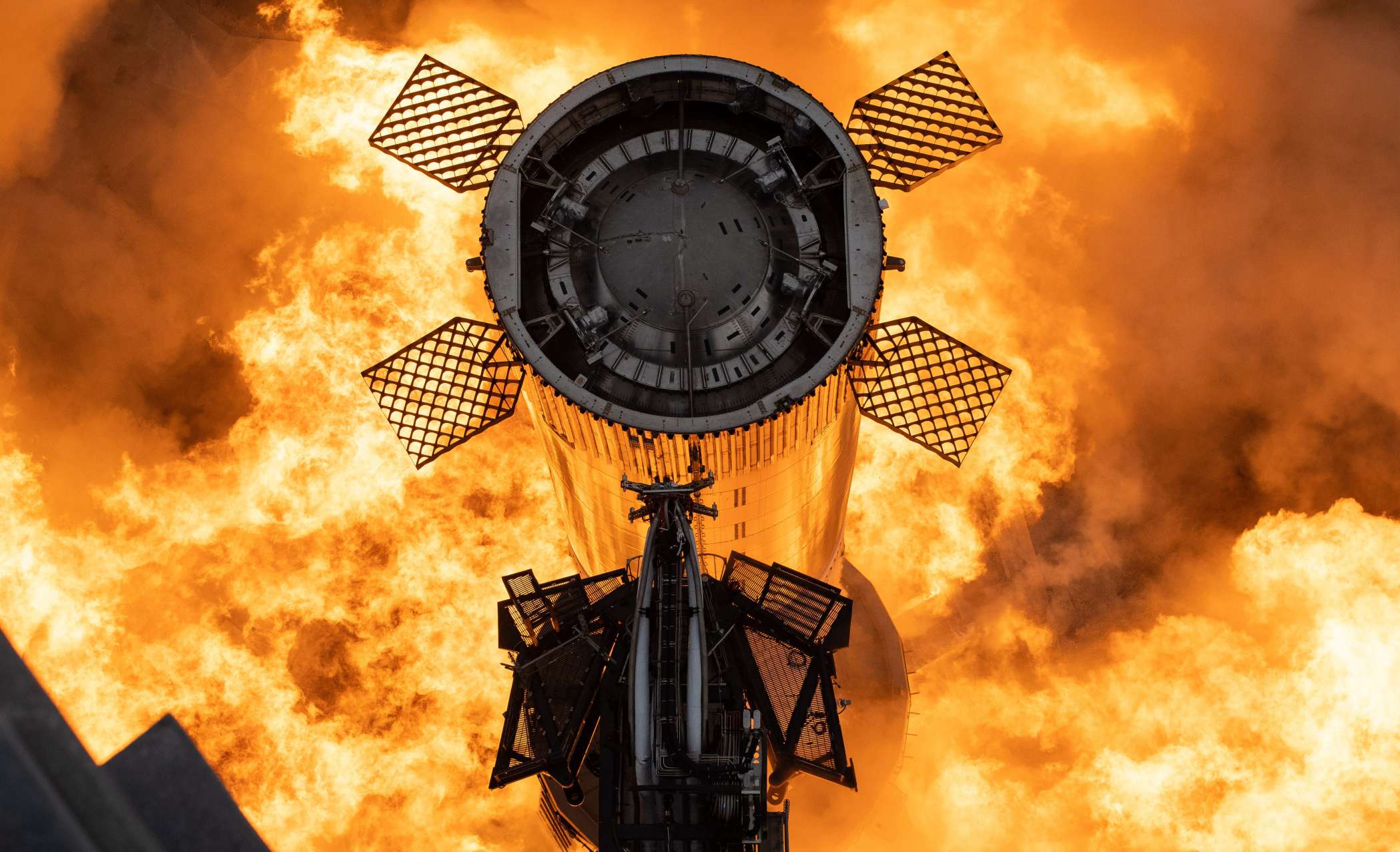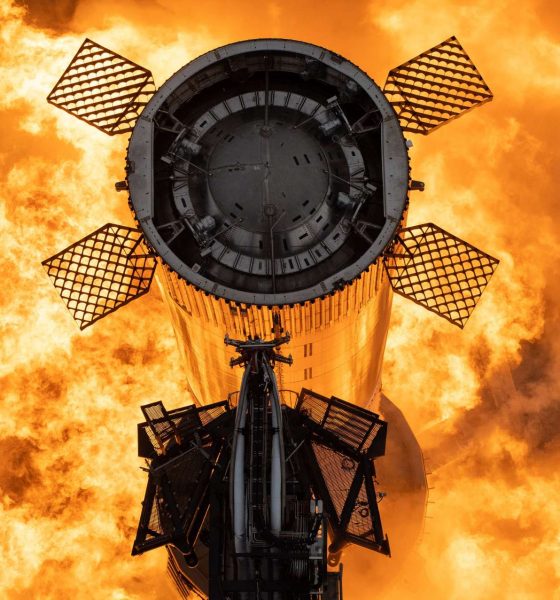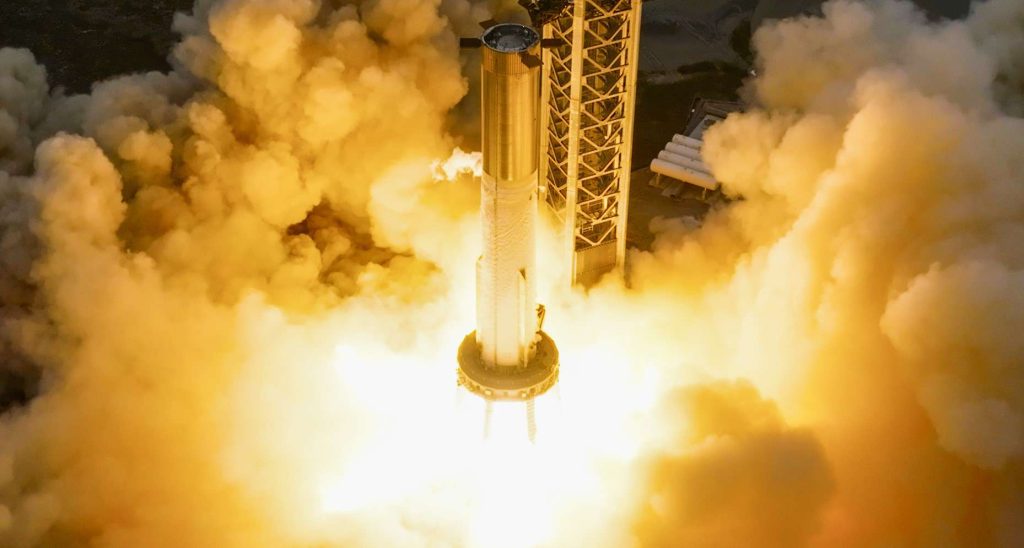

News
SpaceX close to securing FAA license for Starship launch debut
A senior SpaceX director expects the United States Federal Aviation Administration (FAA) to grant a license for the first orbital launch of its next-generation Starship rocket in the “very near future.”
Speaking at the 2023 Space Mobility Conference, SpaceX Senior Director of National Security Space Solutions Gary Henry also indicated that Starship remains on track to launch as early as March 2023. Six weeks ago, CEO Elon Musk tweeted that SpaceX had “a real shot at [a] late February” Starship launch, adding that a “March launch attempt [appeared] highly likely.” February is now out of reach. But March may still be a viable target, according to Henry.
The update that's rolling out to the fleet makes full use of the front and rear steering travel to minimize turning circle. In this case a reduction of 1.6 feet just over the air— Wes (@wmorrill3) April 16, 2024
SpaceX has made significant progress towards Starship’s first orbital launch attempt in early 2023. On January 23rd, Ship 24 and Super Heavy Booster 7 were filled with around 4800 tons (~10.6M lbs) of propellant and completed Starship’s first full wet dress rehearsal, simulating a launch attempt up to the moment before engine ignition.
Two and a half weeks later, SpaceX attempted to ignite all 33 of Booster 7’s Raptor 2 engines. 31 engines ignited as planned, producing 3580 tons (7.9M lbf) of thrust – the most powerful static fire test in the history of rocketry. SpaceX and CEO Elon Musk have been relatively quiet about the test, merely noting that Starship may have still been able to reach orbit if it had lifted off with 31 of 33 engines.


By all appearances, the test was a spectacular success for SpaceX. 94% of Super Heavy’s Raptors ignited on the first attempted 33-engine test. The booster – standing as tall as an entire two-stage Falcon 9 rocket with a payload fairing – then safely drained its tanks. Booster 7 suffered no apparent damage, and SpaceX hasn’t removed or replaced any of its Raptor engines, potentially indicating that all 33 are healthy enough to stay on the booster for Starship’s first orbital launch attempt. That in itself is a major achievement.
On February 21st, SpaceX’s Gary Henry confirmed that Super Heavy Booster 7 and the launch pad that supported its record-breaking static fire test are in “good shape.” Counter to virtually all other large rockets in history, Starship’s first orbital launch pad has no water deluge system, flame trench, or thrust diverter to suppress or redirect the incredible amount of energy the rocket’s engines can produce. Despite that ommittance, the flat concrete directly below the pad appeared to survive almost eight million pounds of thrust and brutal heat with only minor spalling and damage.
The concrete adjacent to the orbital launch mount fared less well, but may eventually be replaced with the same high-temperature Fondag concrete that was added under the mount. If the launch mount and its surroundings are in “good shape” after experiencing about half of Starship’s full thrust, it’s possible that SpaceX will be ready to launch in the near future.
In the meantime, SpaceX is already installing a water deluge system that will eventually make its South Texas Starship launch site much more capable of withstanding the stress of Starship tests and launches. Installing that system and building a sufficiently massive water supply will take months, however, and would likely preclude a March launch attempt, indicating that SpaceX’s first orbital Starship launch attempt will happen without it.
SpaceX has, however, begun installing a final layer of shielding on Starbase’s orbital launch mount. That task will likely need to be completed before the launch attempt and could take a couple weeks.
The strongest sign that Starship’s first orbital launch attempt is imminent will be Ship 24’s return to the pad and reinstallation atop Booster 7, as well as SpaceX’s receipt of an FAA launch license. With testing mostly behind SpaceX, that license to launch may now be the biggest source of uncertainty for Starship’s orbital-class debut. If, as Gary Henry and spaceflight journalist Christian Davenport have indicated, there are no major hurdles standing in the way of that FAA license, Starship could be ready to launch in a matter of weeks.

Elon Musk
Elon Musk and Tesla AI Director share insights after empty driver seat Robotaxi rides
The executives’ unoccupied tests hint at the rapid progress of Tesla’s unsupervised Robotaxi efforts.

Tesla CEO Elon Musk and AI Director Ashok Elluswamy celebrated Christmas Eve by sharing personal experiences with Robotaxi vehicles that had no safety monitor or occupant in the driver’s seat. Musk described the system’s “perfect driving” around Austin, while Elluswamy posted video from the back seat, calling it “an amazing experience.”
The executives’ unoccupied tests hint at the rapid progress of Tesla’s unsupervised Robotaxi efforts.
Elon and Ashok’s firsthand Robotaxi insights
Prior to Musk and the Tesla AI Director’s posts, sightings of unmanned Teslas navigating public roads were widely shared on social media. One such vehicle was spotted in Austin, Texas, which Elon Musk acknowleged by stating that “Testing is underway with no occupants in the car.”
Based on his Christmas Eve post, Musk seemed to have tested an unmanned Tesla himself. “A Tesla with no safety monitor in the car and me sitting in the passenger seat took me all around Austin on Sunday with perfect driving,” Musk wrote in his post.
Elluswamy responded with a 2-minute video showing himself in the rear of an unmanned Tesla. The video featured the vehicle’s empty front seats, as well as its smooth handling through real-world traffic. He captioned his video with the words, “It’s an amazing experience!”
Towards Unsupervised operations
During an xAI Hackathon earlier this month, Elon Musk mentioned that Tesla owed be removing Safety Monitors from its Robotaxis in Austin in just three weeks. “Unsupervised is pretty much solved at this point. So there will be Tesla Robotaxis operating in Austin with no one in them. Not even anyone in the passenger seat in about three weeks,” he said. Musk echoed similar estimates at the 2025 Annual Shareholder Meeting and the Q3 2025 earnings call.
Considering the insights that were posted Musk and Elluswamy, it does appear that Tesla is working hard towards operating its Robotaxis with no safety monitors. This is quite impressive considering that the service was launched just earlier this year.
Elon Musk
Starlink passes 9 million active customers just weeks after hitting 8 million
The milestone highlights the accelerating growth of Starlink, which has now been adding over 20,000 new users per day.

SpaceX’s Starlink satellite internet service has continued its rapid global expansion, surpassing 9 million active customers just weeks after crossing the 8 million mark.
The milestone highlights the accelerating growth of Starlink, which has now been adding over 20,000 new users per day.
9 million customers
In a post on X, SpaceX stated that Starlink now serves over 9 million active users across 155 countries, territories, and markets. The company reached 8 million customers in early November, meaning it added roughly 1 million subscribers in under seven weeks, or about 21,275 new users on average per day.
“Starlink is connecting more than 9M active customers with high-speed internet across 155 countries, territories, and many other markets,” Starlink wrote in a post on its official X account. SpaceX President Gwynne Shotwell also celebrated the milestone on X. “A huge thank you to all of our customers and congrats to the Starlink team for such an incredible product,” she wrote.
That growth rate reflects both rising demand for broadband in underserved regions and Starlink’s expanding satellite constellation, which now includes more than 9,000 low-Earth-orbit satellites designed to deliver high-speed, low-latency internet worldwide.
Starlink’s momentum
Starlink’s momentum has been building up. SpaceX reported 4.6 million Starlink customers in December 2024, followed by 7 million by August 2025, and 8 million customers in November. Independent data also suggests Starlink usage is rising sharply, with Cloudflare reporting that global web traffic from Starlink users more than doubled in 2025, as noted in an Insider report.
Starlink’s momentum is increasingly tied to SpaceX’s broader financial outlook. Elon Musk has said the satellite network is “by far” the company’s largest revenue driver, and reports suggest SpaceX may be positioning itself for an initial public offering as soon as next year, with valuations estimated as high as $1.5 trillion. Musk has also suggested in the past that Starlink could have its own IPO in the future.
News
NVIDIA Director of Robotics: Tesla FSD v14 is the first AI to pass the “Physical Turing Test”
After testing FSD v14, Fan stated that his experience with FSD felt magical at first, but it soon started to feel like a routine.

NVIDIA Director of Robotics Jim Fan has praised Tesla’s Full Self-Driving (Supervised) v14 as the first AI to pass what he described as a “Physical Turing Test.”
After testing FSD v14, Fan stated that his experience with FSD felt magical at first, but it soon started to feel like a routine. And just like smartphones today, removing it now would “actively hurt.”
Jim Fan’s hands-on FSD v14 impressions
Fan, a leading researcher in embodied AI who is currently solving Physical AI at NVIDIA and spearheading the company’s Project GR00T initiative, noted that he actually was late to the Tesla game. He was, however, one of the first to try out FSD v14.
“I was very late to own a Tesla but among the earliest to try out FSD v14. It’s perhaps the first time I experience an AI that passes the Physical Turing Test: after a long day at work, you press a button, lay back, and couldn’t tell if a neural net or a human drove you home,” Fan wrote in a post on X.
Fan added: “Despite knowing exactly how robot learning works, I still find it magical watching the steering wheel turn by itself. First it feels surreal, next it becomes routine. Then, like the smartphone, taking it away actively hurts. This is how humanity gets rewired and glued to god-like technologies.”
The Physical Turing Test
The original Turing Test was conceived by Alan Turing in 1950, and it was aimed at determining if a machine could exhibit behavior that is equivalent to or indistinguishable from a human. By focusing on text-based conversations, the original Turing Test set a high bar for natural language processing and machine learning.
This test has been passed by today’s large language models. However, the capability to converse in a humanlike manner is a completely different challenge from performing real-world problem-solving or physical interactions. Thus, Fan introduced the Physical Turing Test, which challenges AI systems to demonstrate intelligence through physical actions.
Based on Fan’s comments, Tesla has demonstrated these intelligent physical actions with FSD v14. Elon Musk agreed with the NVIDIA executive, stating in a post on X that with FSD v14, “you can sense the sentience maturing.” Musk also praised Tesla AI, calling it the best “real-world AI” today.








